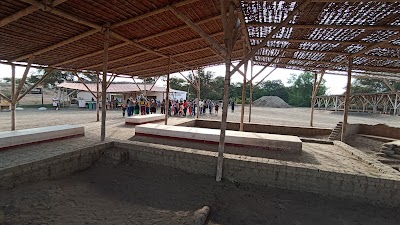Bruning Archaeological Museum (Museo Arqueológico Bruning)
Overview
The Bruning Archaeological Museum, nestled in the vibrant city of Lambayeque, Peru, is a must-visit destination for anyone fascinated by pre-Columbian history and the rich cultural heritage of ancient civilizations. Established in 1921, the museum honors its founder, the German ethnographer and photographer Hans Heinrich Brüning, who devoted his life to documenting and preserving Peru's archaeological treasures. Here, visitors can embark on a captivating journey through the lives and cultures of significant ancient civilizations, including the Moche, Sicán, Chimú, and Inca.
One of the museum's greatest attractions is its extensive collection of artifacts, which spans centuries of pre-Hispanic history. With over 1,500 archaeological pieces, the museum showcases intricate pottery, exquisite jewelry, vibrant textiles, and remarkable metalwork. The well-curated exhibits provide visitors with a thorough understanding of the region's diverse history. Each display is accompanied by detailed labels in both Spanish and English, ensuring accessibility for international tourists.
Among the museum's most renowned artifacts is the Tumi, a ceremonial knife deeply emblematic of the Sicán culture. Often referred to as the "Lord of Sicán," this masterpiece of ancient metallurgy is crafted from gold and inlaid with turquoise, showcasing the advanced skills of the Sicán people. The Tumi not only highlights their craftsmanship but also reflects their spiritual beliefs, as these knives were traditionally used in ritual sacrifices. Another notable exhibit features a collection of effigy vessels from the Moche culture, celebrated for their lifelike portrayals of animals, humans, and deities.
In addition to its impressive collection, the Bruning Museum holds a significant place in the development of archaeological research in Peru. Hans Heinrich Brüning's extensive fieldwork in the region laid the groundwork for future archaeological investigations. His legacy is preserved in the museum's archives, which house his original photographs and field journals, providing invaluable resources for researchers and insights into the early days of Peruvian archaeology.
For visitors eager to explore the daily lives of ancient Peruvians, the museum offers insights into agricultural practices, religious rituals, and social structures of these civilizations. Exhibits delve into the ingenious irrigation techniques developed by the Moche and Sicán, which allowed them to flourish in the arid coastal environment. Additionally, the museum sheds light on the complex belief systems and cosmology of these cultures, showcasing their advanced understanding of astronomy and elaborate burial practices.
An intriguing aspect of the Bruning Museum is its architectural design. Constructed in a neoclassical style, the building stands out amidst the traditional architecture of Lambayeque. Surrounded by a lush garden, the museum provides a serene setting for visitors to relax and reflect on their experience. The garden is home to a variety of indigenous plants, offering a glimpse into the flora that was significant to the ancient inhabitants of the region.
The museum frequently hosts special exhibitions and cultural events, enriching the visitor experience further. These events often include lectures by prominent archaeologists, workshops on ancient crafts, and traditional music and dance performances. Engaging in these activities fosters a deeper appreciation for the cultural heritage and helps keep these traditions alive for future generations.
For those planning a visit, the Bruning Archaeological Museum is conveniently located near other notable archaeological sites and museums in the region. Just a short distance away are the Royal Tombs of Sipán Museum and the Túcume Archaeological Complex, making Lambayeque an excellent base for exploring the ancient wonders of northern Peru.
In summary, the Bruning Archaeological Museum offers an enthralling journey through Peru's ancient past, featuring a wealth of artifacts and informative exhibits that illuminate the vibrant cultures that once thrived in this region. Its rich collection, historical significance, and engaging programming make it an essential stop for any traveler seeking to understand the depth and complexity of pre-Columbian civilizations. Whether you're an avid history buff or a casual visitor, the museum promises an enriching and memorable experience.




